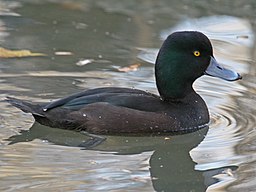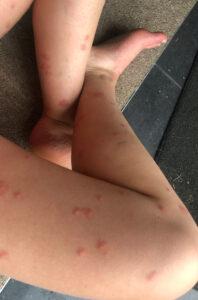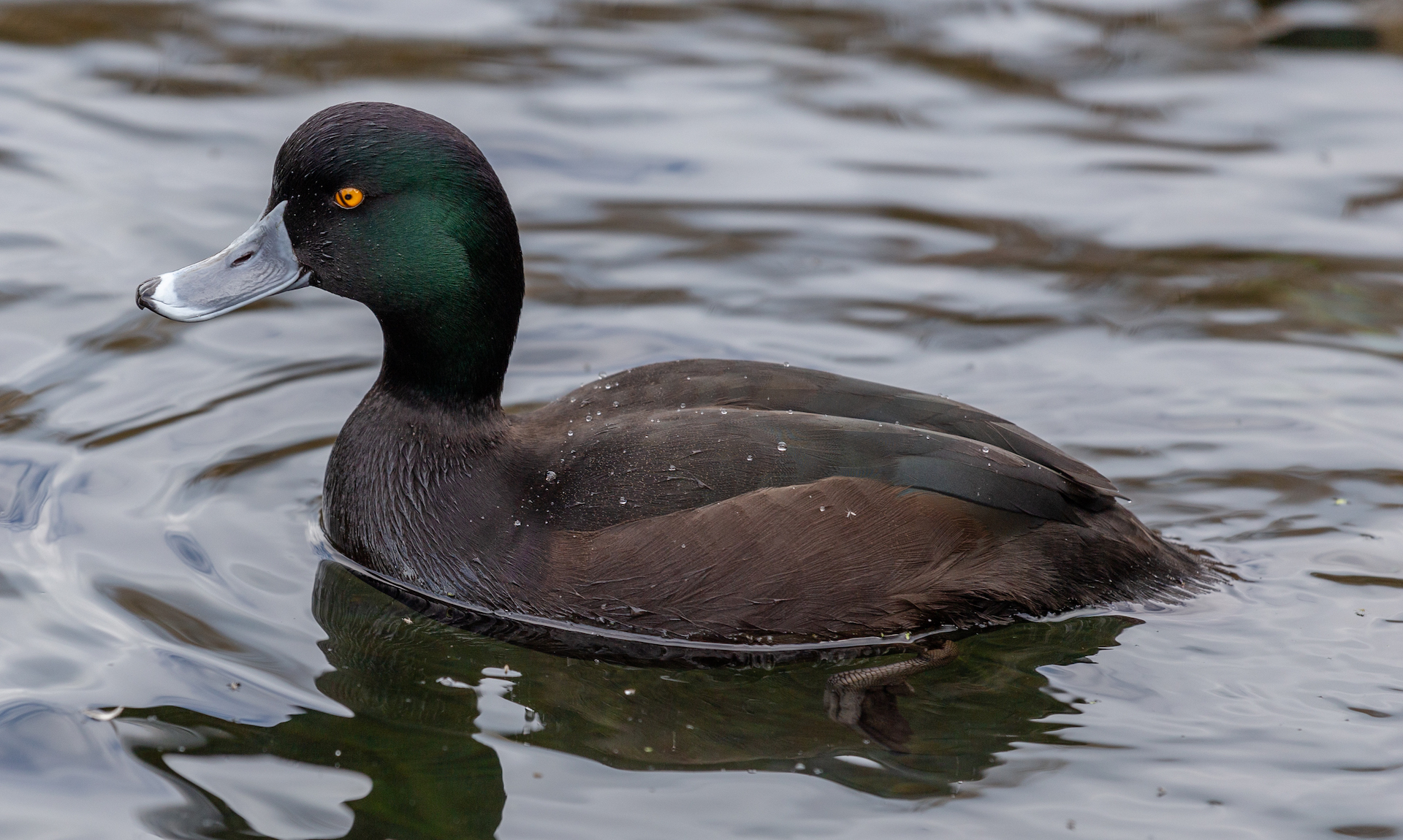Have you ever gone home after a swim and later found you’re covered in small, very itchy red dots? That could be duck itch – also known as swimmer’s itch, or schistosome cercarial dermatitis.
What is duck itch and swimmer’s itch?
Duck itch is caused by an allergic reaction to the cercariae (larvae) of schistosomes – a type of parasitic flatworm.
If that’s not gross enough for you, read on.
The adult parasites can live for several years, producing hundreds of thousands of eggs. Their host is usually a duck, and here in New Zealand, they’re found in the small, yellow-eyed, black-feathered, diving ducks called Scaup. Mallards, Canada geese and other waterfowl can be hosts too.
These ducks and waterfowl pass the parasites in their poo. They then hatch and develop in an intermediate host, a snail. When the developed parasite (a cercaria) leaves an infected snail, it penetrates the skin of a duck and the cycle begins again.
Unfortunately for both us and the cercaria, these tiny parasites don’t always land on a duck. Sometimes, they land on and penetrate the skin of a swimmer. Because humans aren’t the intended host, the parasite dies.

The red rash that we get when infected with duck itch is a sign that our immune system is working to kill the parasite.
Can you get duck itch in Queenstown?
Yes, you can get duck itch in the freshwater lakes of Queenstown and the Southern Lakes.
Duck itch has been scientifically studied in Lake Wanaka and we know it can be a problem in our swim lane in Lake Whakatipu, too.
It’s worse in the warmer months (December and January), and seems to go away during the cold months (or maybe that’s because we don’t stay in the water as long?!). There’s no sure-fire way to predict where and when it will be there or how long it’ll be there. However, it’s usually a problem in shallow areas of the lake, and some research suggests that an onshore wind can make duck itch worse.
The longer you spend in the water, the more likely you are to get swimmer’s itch.
Duck itch symptoms
Duck itch is an itchy rash that looks like red spots or blisters. They’re a bit like sandfly bites in some people.
The rash can appear within minutes or up to two days after swimming in infected water. It’s a myth that only children can get swimmer’s itch – anyone who spends time in infected water can get it. Some people are more ‘allergic’ than others and some lucky swimmers don’t seem to get it at all!
It’s not contagious and although it is uncomfortable, the rash should go away on its own within a week. If it lasts longer than that or if you notice pus around the rash, you might want to talk to your healthcare provider.
The bad news is: if you are sensitive to duck itch, subsequent exposures will make it worse.

What to do if you have duck itch
Lifestyle tips and home remedies to help alleviate symptoms could include:
- An oral anti-histamine or using an anti-histamine cream
- Using colloidal oatmeal cream or an anti-itch cream with calamine in it
- Avoiding scratching the rash
- Taking a lukewarm bath with Epsom salts in it
- Making a paste of baking soda and water to apply to the infected skin
How to avoid duck itch
Tips to avoid duck itch include:
- Avoid swimming in areas where it can be a problem (e.g. shallow water and marshy water, where the snails hang out).
- Don’t swim (or avoid swimming for too long) when it’s known to be an issue (e.g. in the warmer months).
- Rinse off after swimming. Some of our swimmers have found a solution of fresh water with Epsom salts seems to help.
- Dry off carefully after swimming – get rid of any green-y muck!
- Wear a wetsuit or rash vest. This appears to be a barrier.
- Wear waterproof sunscreen and insect repellent. The study in Lake Wanaka suggests that SPF50+ sunscreen with the preservative phenoxyethanol in it can help prevent duck itch (it’s also known as: 2-phenoxyethanol, Euxyl 400, PhE).
- Don’t feed ducks near swimming spots.
Other names for duck itch
Duck itch is the New Zealand local name for schistosome cercarial dermatitis. In other parts of the world, it’s also known as swimmer’s itch, duck fleas, rice paddy itch, clam diggers itch, ‘hoi con’ (Thailand), ‘kobanyo’ or ‘kubure’ (Japan), and ‘sawah’ (Malaysia).
This article was written under the influence of a bad bout of duck itch. #ScratchScratch. We’re not scientists or medical professionals – please see a healthcare provider if you think you need to.

